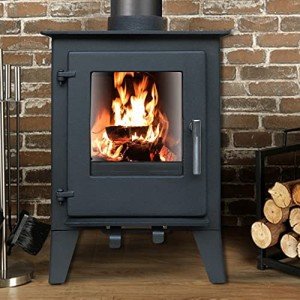Why Multi Fuel Log Burner Is More Tougher Than You Imagine
Understanding Multi-Fuel and Wood Burning Stoves: A Comprehensive Guide
In today's world, where energy effectiveness and eco-friendliness are ending up being increasingly important, wood-burning stoves and multi-fuel stoves have emerged as popular options for heating spaces. These stoves not only supply heat but likewise add a rustic charm to homes, making them an attractive option to standard heater. This post digs into the details of multi-fuel and wood-burning stoves, their benefits, distinctions, and factors to consider to bear in mind when buying one.
What is a Wood Burning Stove?
A wood-burning stove is a heating home appliance specifically created to burn wood as its primary fuel source. These stoves consist of a firebox, a flue (or chimney) for venting smoke, and numerous controls to control air flow and temperature. Wood-burning stoves can be made from various products, including cast iron, steel, or soapstone. They are understood for:
- Sustainability: Wood is a renewable resource, and when sourced properly, it can be a carbon-neutral heating option.
- Aesthetic Appeal: The atmosphere of a wood fire is demanded for numerous house owners, providing more than simply heat to a space.
What is a Multi-Fuel Stove?
Multi-fuel stoves, as the name recommends, are created to burn numerous types of fuel. While wood can be burnt in a multi-fuel stove, these appliances can likewise burn coal, peat, or other biomass fuels. The versatility of multi-fuel stoves makes them appealing for those looking for options beyond traditional wood burning. Key attributes consist of:
- Flexibility: Users can choose the type of fuel that is easily available or cost-effective.
- Performance: Multi-fuel stoves can be more efficient than wood-specific stoves, specifically when burning certain types of fuel.
Key Differences Between Wood Burning and Multi-Fuel Stoves
While both stove types serve similar purposes, they operate under different principles, and understanding these can assist in making an informed decision.
Feature
Wood Burning Stoves
Multi-Fuel Stoves
Fuel Types
Primarily wood
Wood and other fuels (coal, peat, and so on)
Burn Efficiency
Normally lower, affected by moisture in wood
Typically higher efficiency when burning coal
Flue Requirements
Generally needs a less complex flue system
More complex flue system due to differing combustion
Control Mechanisms
Airflow control is simpler
Typically features sophisticated control alternatives
Expense
Frequently lower initial cost
Can be costlier due to the multi-fuel choices
Advantages of Using Multi-Fuel and Wood Burning Stoves
Both kinds of stoves come with their own set of advantages that can deal with differing requirements.
Benefits of Wood Burning Stoves
Budget Friendly Running Costs: As wood is typically more affordable than fossil fuels, especially if sourced in your area, operating a wood-burning stove can be cost-efficient.
Minimal Pollution: Advanced models release less toxins than conventional open fires or older stoves due to improved performance.
Low Environmental Impact: When sustainably sourced, wood functioning as a sustainable fuel can minimize the carbon footprint related to heating.
Advantages of Multi-Fuel Stoves
Adaptability in Fuel: The ability to change fuels based on accessibility implies fewer fret about fuel sourcing.
Greater Heat Output: Multi-fuel stoves can frequently achieve higher temperatures and heat bigger spaces better.
Longer Burn Times: Coal, for instance, supplies a longer and more constant burn compared to wood.
Considerations When Choosing a Stove
When choosing between a wood burning and multi-fuel stove, there are several aspects to consider:
Space and Style: The type of stove ought to complement your home's design while fulfilling your heating requirements.
Required Installation and Maintenance: Professional setup and routine upkeep are important to make sure efficiency and safety.
Local Regulations: Depending on your place, there may be regulations relating to the types of fuel you can burn or emissions requirements.
Expense and Budget: Identify your spending plan for both the purchase and ongoing fuel costs to choose a stove that best fulfills your monetary needs.
FAQs
1. Can I use coal in a wood-burning stove?
No, coal must not be used in a wood-burning stove. Burning reference in such a stove can lead to harm and hazardous conditions.
2. How often do I require to clean my stove?
Regular cleaning every couple of weeks throughout the heating season is generally recommended. Annual professional assessments and cleansing can also boost safety and performance.
3. Are there any safety issues with utilizing wood-burning stoves?
Yes, problems such as creosote accumulation in the chimney, correct setup, and making sure that the room has sufficient ventilation are essential for safe operation.
4. What kind of wood is best for burning?
Hardwoods such as oak, hickory, and maple are normally recommended as they burn hotter and longer than softwoods like pine, which can create more creosote accumulation.
5. How can I improve the performance of my stove?
Regular cleaning, using seasoned wood, and ensuring proper air flow can improve effectiveness. Likewise, setting up a stove thermometer can help keep an eye on and enhance performance.
Multi-fuel and wood-burning stoves are exceptional heating services with distinct advantages and considerations. Understanding the differences, benefits, and maintenance needs can help house owners make notified decisions about including these stoves into their homes. Whether choosing a traditional wood-burning stove for its charm or a multi-fuel choice for its adaptability, these heater can offer heat and convenience for numerous seasons to come.
